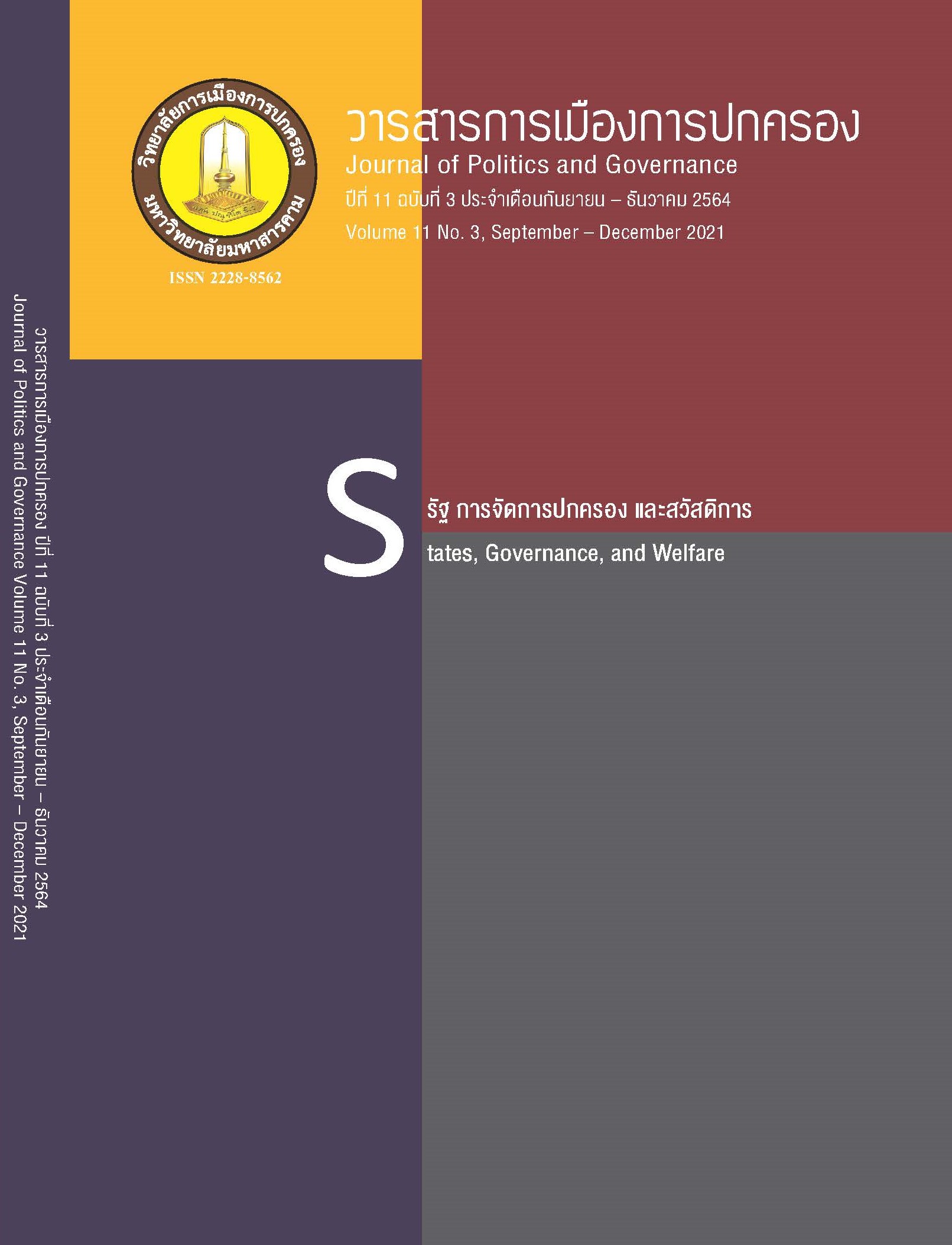Development of Lecturer’s Competencies in Public Administration Curriculum of Northeast Rajabhat Universities Readiness to Thailand 4.0
Main Article Content
Abstract
This mixed method research included the following objectives relating to Thailand’s northeastern group of Rajabhat universities: (1) to study lecturers’ actual and desired competency levels, (2) to compare the differences between lecturers’ actual and desired competency levels, (3) to study the influence of motivation, hygiene, and academic promotion factors of lecturers’ actual competencies, and (5) to study the problems and solutions in developing a Public Administration curriculum for lecturers’ actual competencies in readiness for Thailand’s 4.0 (an economic model that aims to unlock the country from several economic challenges resulting from past economic development models). Quantitative samples (142) comprised Public Administration curriculum lecturers from 11 Rajabhat universities in northeastern Thailand. The research instrument was a 5-point rating scale questionnaire with a 0.99 reliability value. Statistics employed included: frequency, percentage, mean, standard deviation, T-test (Paired Samples), correlation, and multiple linear regression analysis. Qualitative informants were 25 experts and curriculum administrators, and the research instrument was a semi-structured interview which content was analyzed. The results of the research found that the lecturers’ overall competencies were at a high level. The actual and desired competency differences = comparison was statistically significant at 0.01, where the actual competency level was found to be lower than the desired level of competency. Factors that significantly affected actual competency at 0.05 were academic promotion and hygiene factors, with a 60% corrective prediction (R2 = .60). Problem conditions in developing lecturers’ competencies were identified as a lack of experience, unclear academic tasks, unwanted development, institutional neglect of the importance of development, and unconnected work and needs. Recommended competency development solutions were to emphasize technology, establish a support department, create an academic atmosphere, and promote faculty collaboration.
Article Details
References
ประทวน มูลหล้า. (2552). ปัจจัยที่สัมพันธ์กับสมรรถนะการบริหารจัดการชั้นเรียนของครู ระดับมัธยมศึกษาช่วงชั้นที่ 3 ในสถานศึกษาสังกัดสำนักงานเขตพื้นที่การศึกษากรุงเทพฯ เขต 1. (ปริญญานิพนธ์มหาบัณฑิต ไม่ได้ตีพิมพ์). มหาวิทยาลัยศรีนครินทรวิโรฒ, กรุงเทพฯ
เพลินพิศ จุฬพันธ์ทอง. (2557). การพัฒนากลยุทธ์การบริการวิชาการแกสังคมของมหาวิทยาลัยราชภัฏกลุ่มภาคเหนือตอนล่าง. (วิทยานิพนธ์ดุษฎีบัณฑิต ไม่ได้ตีพิมพ์). มหาวิทยาลัยราชภัฏกำแพงเพชร, กำแพงเพชร
เมธัส วันแอเลาะ. (2550). ปัจจัยที่ส่งผลต่อสมรรถนะของครูโรงเรียนสอนศาสนาอิสลามระดับมัธยมศึกษา สังกัดสำนักบริหารงานคณะกรรมการส่งเสริมการศึกษาเอกชน เขตกรุงเทพฯและปริมณฑล. ศรีปทุมปริทัศน์, 7(2), 88-101.
สำนักงานคณะกรรมการอุดมศึกษา. (2555). คู่มือพจนานุกรมสมรรถนะสำหรับข้าราชการของสำนักงานคณะกรรมการการอุดมศึกษา (สกอ). กรุงเทพฯ: สำนักงานคณะกรรมการอุดมศึกษา.
สำนักงานคณะกรรมการพัฒนาการเศรษฐกิจและสังคมแห่งชาติ. (2560). แผนพัฒนาเศรษฐกิจและสังคมแห่งชาติ ฉบับที่สิบสอง. กรุงเทพฯ: สำนักงานคณะกรรมการพัฒนาการเศรษฐกิจและสังคมแห่งชาติ สำนักนายกรัฐมนตรี.
สำนักงานเลขาธิกาสภาการศึกษา. (2560). แผนการศึกษาแห่งชาติ. กรุงเทพฯ: พริกหวานกราฟฟิค.
อัจฉรา หล่อตระกูล. (2557). การพัฒนาสมรรถนะพนักงานมหาวิทยาลัยของรัฐ. (พุทธศาสตรดุษฎีบัณฑิต ไม่ได้ตีพิมพ์). มหาวิทยาลัยมหาจุฬาลงกรณราชวิทยาลัย, กรุงเทพฯ.
อัมพร ธำรงลักษณ์, ยุทธพร อิสระชัย, และวรารัก เฉลิมพันธุศักดิ์. (2559). สถานภาพของวิชารัฐประศาสนศาสตร์ในประเทศไทย. วารสารการเมือง การบริหาร และกฎหมาย, 8(1), 40 - 62.
Cronbach, L. (1970). Essentials of Psychological Testing. New York: Harper & Row.
Herzberg, F. (1959). The Motivation to work. New York: John Wiley and Sons.
Klein, J. D. and Richey, R. C. (2005). Performance Improvement. The case for intonational standards. New York: John Wiley & Sons.
Likert, R. (1967). The Method of Constructing and Attitude Scale. New York: McGraw-Hill.


